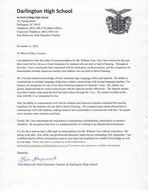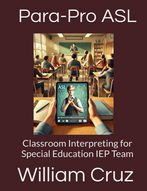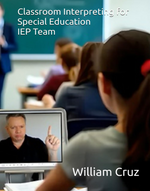









William Cruz
William Cruz

ASL On Zoom.com

SCROLL DOWN TO VIEW CREDENTIALS
Inclusion and Autonomous Learning
"One of the most effective ways to foster inclusion in education is by promoting autonomous learning. Providing students with the tools and resources necessary to navigate their educational environment independently enhances their confidence and engagement. The importance of fostering independence in students is priceless, particularly those who rely on interpreters or assistive technology, to create a more inclusive classroom experience".
-William Cruz-
EIPA 3.8 / 2025-2030
+
ASL Classroom Interpreter
Educational Interpreter

Classroom Interpreter
Author, Cartoonist
and Technologist
Mr. William Cruz

3.8
Results Score 2025
William Cruz LLC
ASL On Zoom.com
What others have to say about William...
Available ASAP!
Providing Exceptional Classroom Interpreting Services
2025-2026 School Year
EDUCATIONAL ASL
-
B.S. Psychology.
-
California Coast University
-
A.A.S. Liberal Arts.
-
Borricua College University
-
C.E.U. Gallaudet University
-
E.I.P.A. Certification 3.8. new 2024
-
Over 28 years of Interpreting Experience.
-
American Sign Language.
-
Mexican Sign Language,
-
Spanish,
-
English.
-
Remote Classroom Interpreter.
-
Published Author.
-
Husband, Dad and Cartoonist.
-
Special Education Advocate.
-
Present CEU.
-
Curriculum and Instruction (STEM).
-
ITP Online.
PUBLISHED WORKS



William works as a Video Remote Classroom Interpreter.
As a certified professional, he provides ASL interpreting to students of all ages with a hearing impairment who are receiving all or part of their education in a classroom setting along with hearing children.
William's primary function is to facilitate communication among students with hearing impairment, their hearing peers, the classroom teacher, and other personnel in the school system.
Map Project provides information on the minimum state requirements for educational interpreters. These requirements were pulled directly from the regulatory documents available for each state.
What others have to say about William...
"William is excellent as an interpreter.
He is always thorough and personable
as he supports the attendees at
my conferences.
Thanks William for all you do!"
"Deaf people can do anything hearing people can do, except hear."
– Dr. I. King Jordan, the first deaf president of Gallaudet University




Dun & Bradstreet D-U-N-S® Number for WILLIAM CRUZ LLC
D-U-N-S number: 920858031/130858029





































